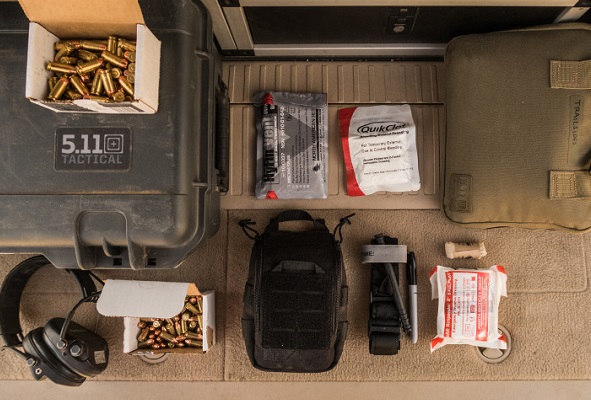Setting Up Your IFAK: Pouch Placement and Contents

Having a properly packed IFAK could save your – or someone else’s – life, so you need to know exactly what to carry and where to affix it on your kit. If you’re in law enforcement, the military or in another first-responder role, your unit or organization most likely has an SOP that dictates what you need in your IFAK and where to place it on your gear. If you’re setting it up for personal use, you’ll need to use your best judgement.
Choosing the Right Individual First Aid Kit
Outside your organization’s SOP, you can choose the IFAK that best fits your needs. First, you need something that’s going to fit all the supplies you need. Here’s what the most basic IFAKs should include:
- Burn dressing
- Combat (hemostatic) gauze
- Gloves
- Ibuprofen
- Israeli dressings
- Pen light
- Permanent marker
- Pressure dressing
- Tourniquet
- Trauma shears
- Vented chest seal
This supply list covers the bare minimum, and typically, it’ll all fit into a standard 3 x 6 Med Kit. Here are extra items you should include if your IFAK is larger, like a 6 x 6 Med Pouch or a full Med Pouch Gear Kit:
- Control wrap
- Duct tape
- Extra gauze
- Nasal pharyngeal airway
- Pneumothorax kit (only if you’re trained to use it, though)
- Splinting material
- Trauma tape
If you’re packing a range bag or survival bag, it’s worth investing in a UCR IFAK Pouch Med Kit, which comes with a tourniquet, nitrile gloves, a Sharpie, emergency trauma dressing, a pair of vented chest seals and QuikClot® dressing. You can add other items you need or complement the med pouch you’ve already put together. However, if you prefer building your own kit from the ground up, the UCR IFAK Pouch has plenty of room for personalization. You can add more supplies with the Double Deploy Gear Set.
Where to Place Your IFAK
Your unit or organization’s SOP will dictate where your IFAK belongs on your kit – usually it’s over your kidney or just above your waist on your dominant side – but if you’re free to choose, think about how you’ll react in an emergency. If you’re wearing a plate carrier, you may want to fit it between holsters, mag pouches and other attachments.
Here’s what to keep in mind when you’re attaching your IFAK to your gear:
- Your IFAK should be used to treat you – if someone else is injured, use his or her IFAK. It’s just like the military’s rule on tourniquets: Never use your own tourniquet on your buddy. Consider placing it where someone else will be able to access it best.
- Put your IFAK somewhere you can get to it with either hand in case your dominant hand is incapacitated.
- Attach your IFAK where it won’t affect you drawing your firearm. For example, if you use a drop-leg holster, you need to practice and make sure the first-aid kit doesn’t get in your way.
Your IFAK has to provide easy access – not just for you, but for someone who might be treating you. As long as you or someone else can reach it, and as long as you have basic supplies to stop bleeding and sucking chest wounds, you’ll be ready to handle the vast majority of emergency medical situations until you can get help.